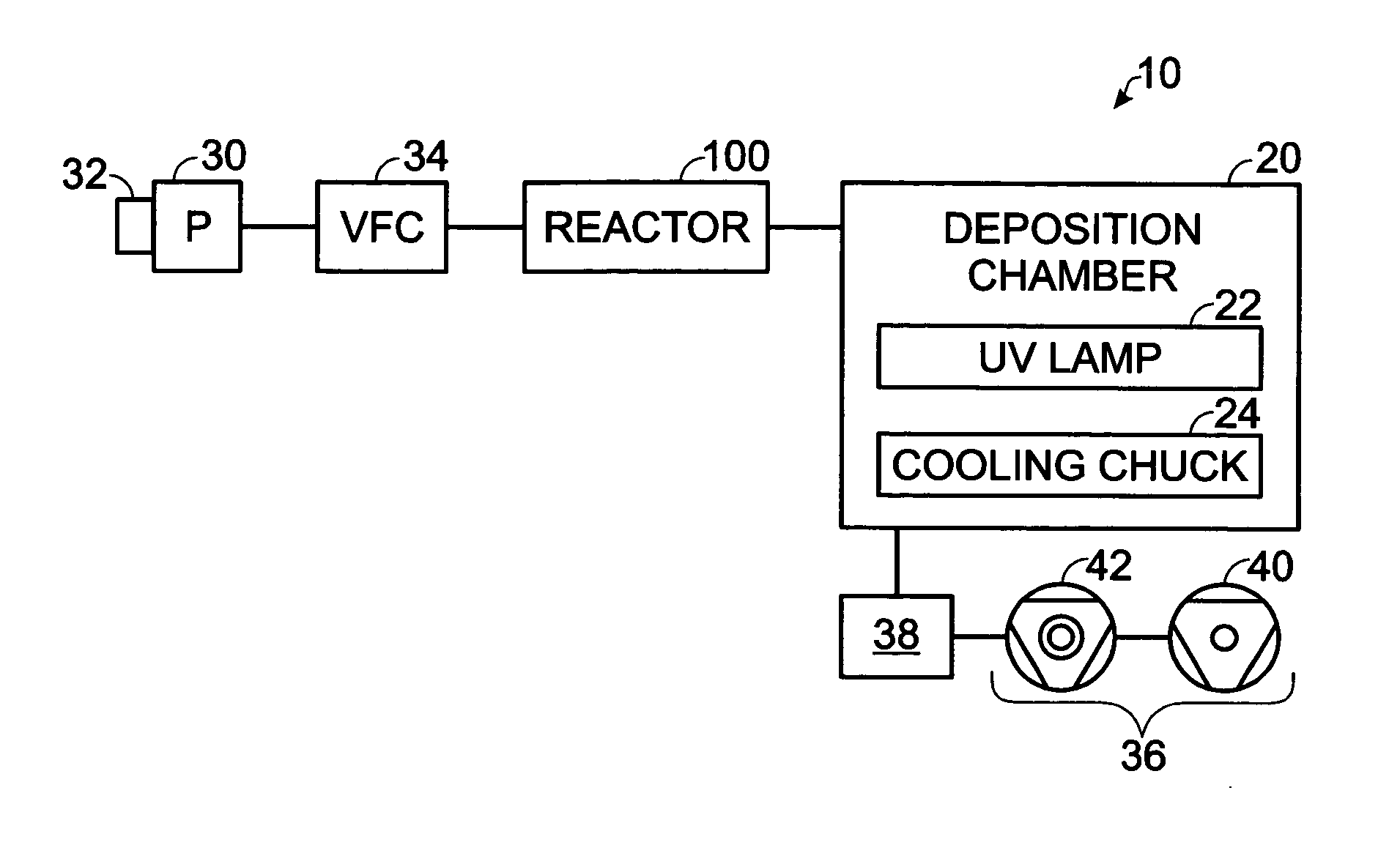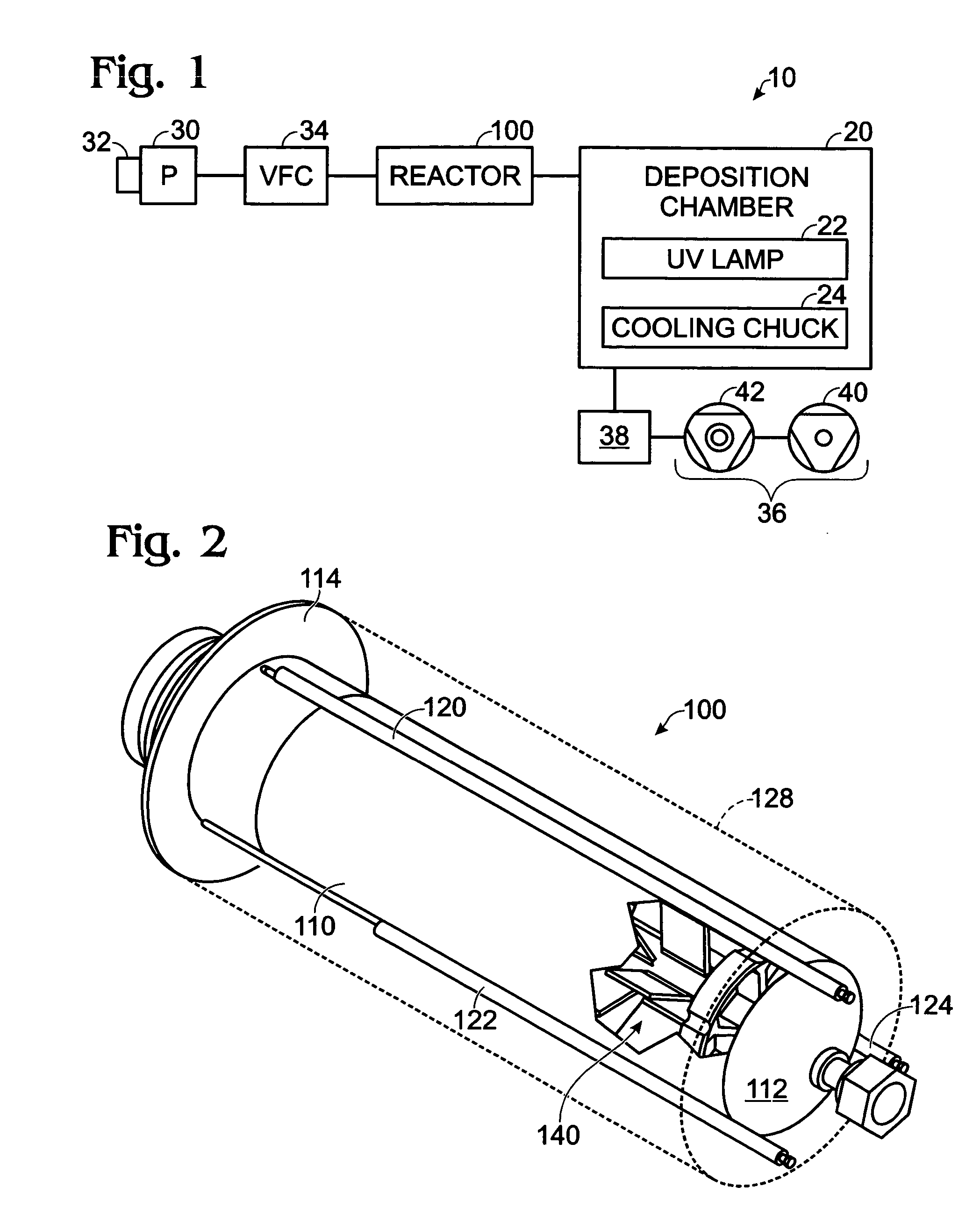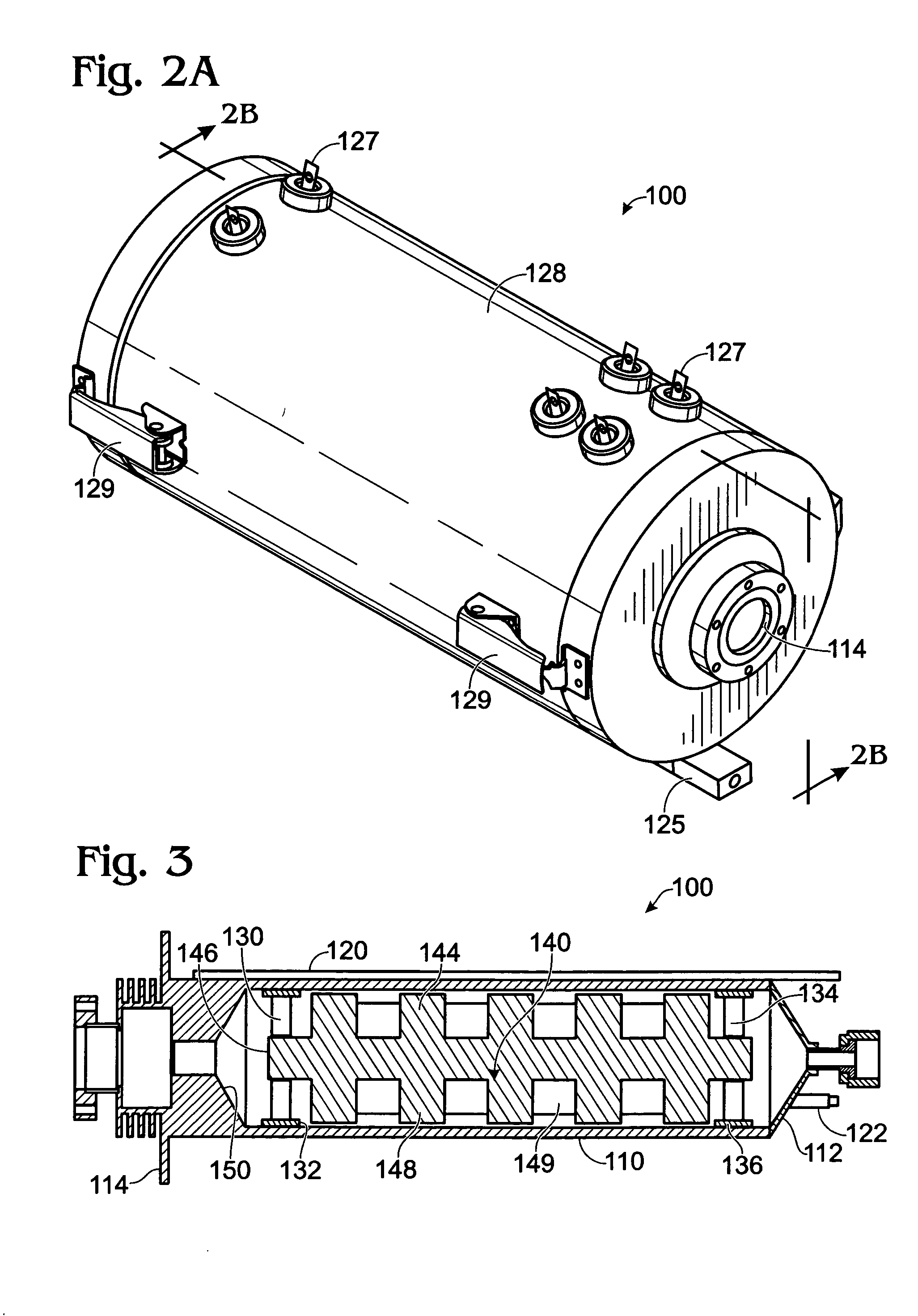Reactor for producing reactive intermediates for low dielectric constant polymer thin films
a polymer thin film, reactive intermediate technology, applied in indirect heat exchangers, semiconductor/solid-state device details, lighting and heating apparatus, etc., can solve the problems of inconvenient production of dimers via solvent trapping method, and inability to meet the requirements of sub-90 micron integrated circuits
- Summary
- Abstract
- Description
- Claims
- Application Information
AI Technical Summary
Benefits of technology
Problems solved by technology
Method used
Image
Examples
Embodiment Construction
FIG. 1 shows, generally at 10, a vapor deposition system for depositing a polymer dielectric film on a wafer via transport polymerization. System 10 is at times described herein in the context of a system for depositing a PPX-F film, but it will be appreciated that the concepts set forth herein may be extended to any other suitable low dielectric constant polymer film deposition system.
Vapor deposition system 10 includes a vapor deposition chamber 20, and a wafer holder 22 for holding a wafer during deposition. Deposition chamber 20 may also include an energy source, such as an ultraviolet light source 24, for various purposes, for example, for drying a wafer surface before depositing a low dielectric constant film, or for activating the polymerization of a keto-, vinyl- or halo-organosilane layer that may be deposited above or below the low dielectric constant polymer film. Exemplary organosilane materials and uses thereof are disclosed in U.S. patent application Ser. No. 10 / 816,2...
PUM
| Property | Measurement | Unit |
|---|---|---|
| Flow rate | aaaaa | aaaaa |
| Transparency | aaaaa | aaaaa |
| Energy | aaaaa | aaaaa |
Abstract
Description
Claims
Application Information
 Login to View More
Login to View More - R&D
- Intellectual Property
- Life Sciences
- Materials
- Tech Scout
- Unparalleled Data Quality
- Higher Quality Content
- 60% Fewer Hallucinations
Browse by: Latest US Patents, China's latest patents, Technical Efficacy Thesaurus, Application Domain, Technology Topic, Popular Technical Reports.
© 2025 PatSnap. All rights reserved.Legal|Privacy policy|Modern Slavery Act Transparency Statement|Sitemap|About US| Contact US: help@patsnap.com



